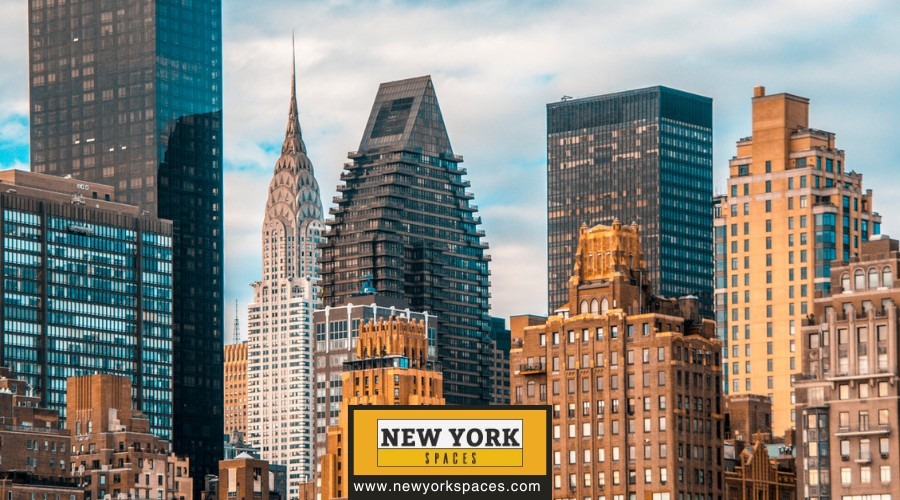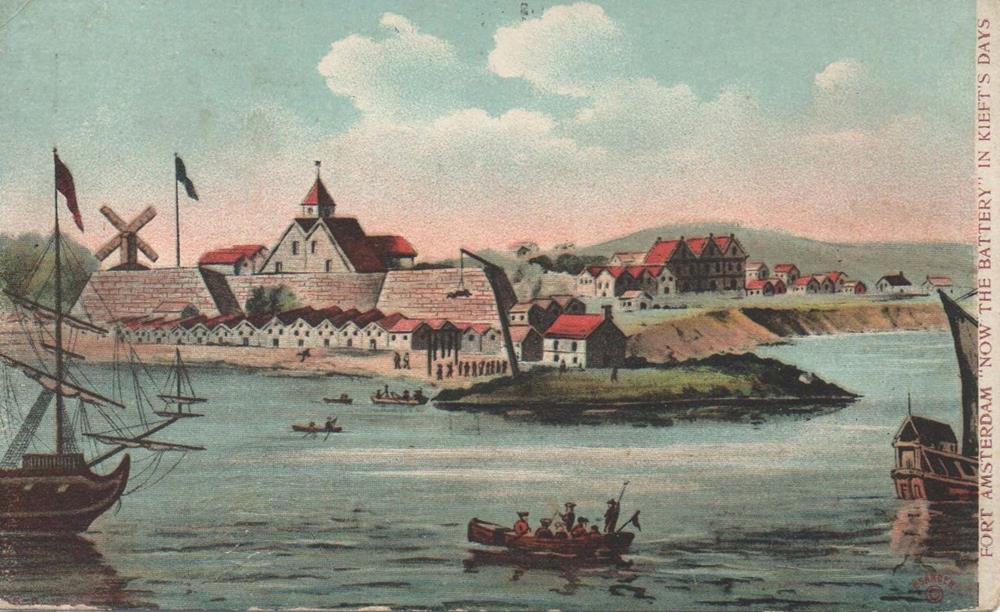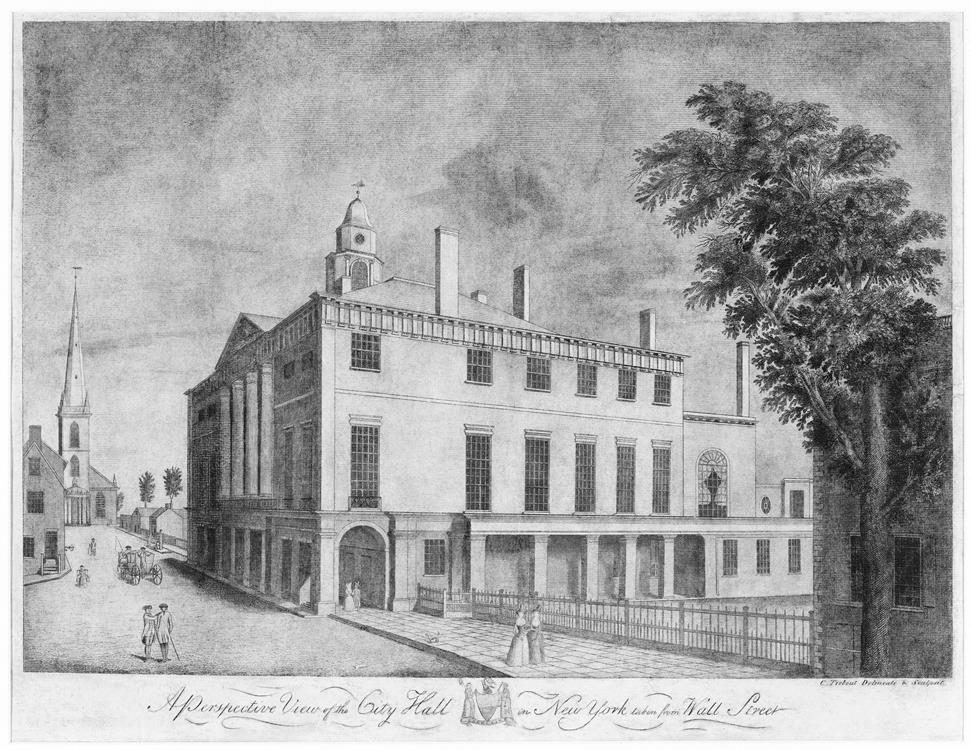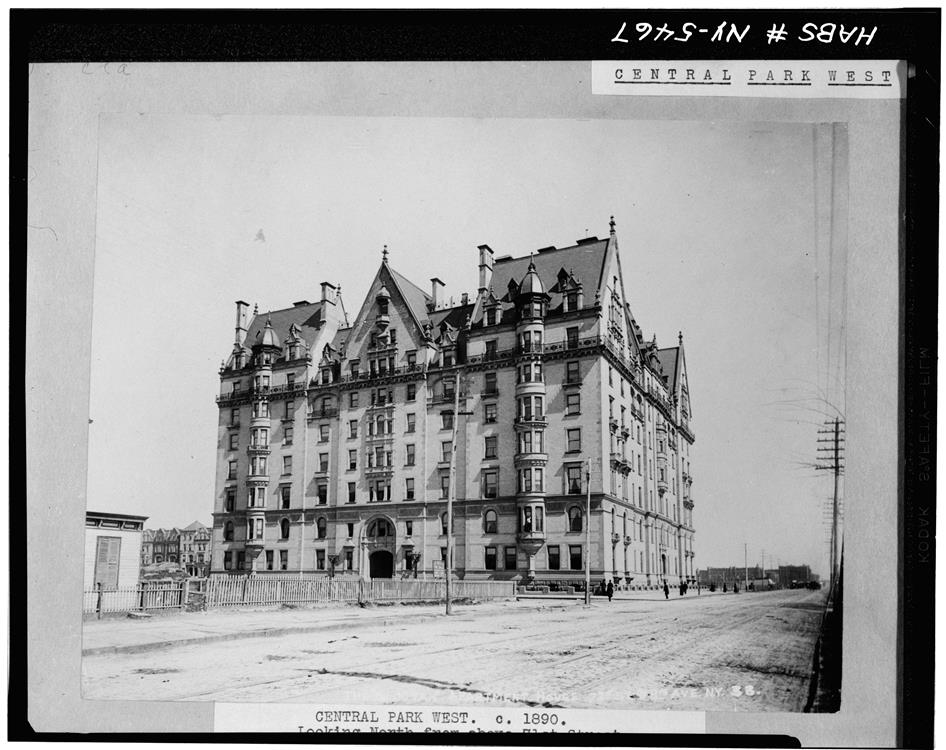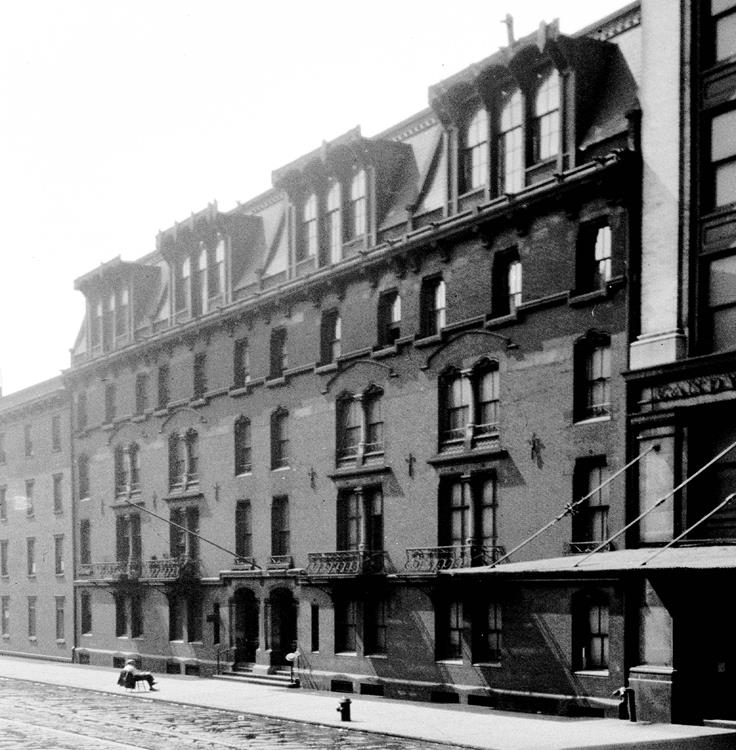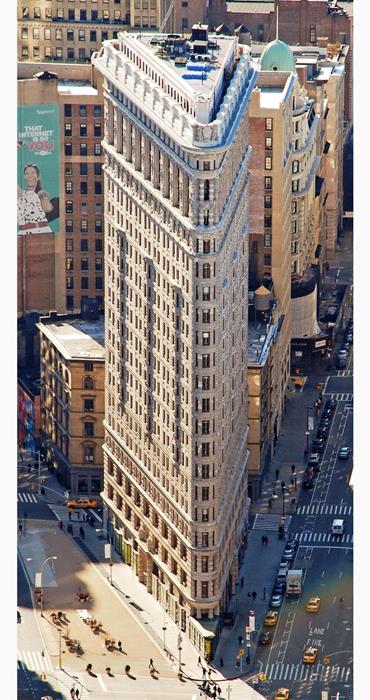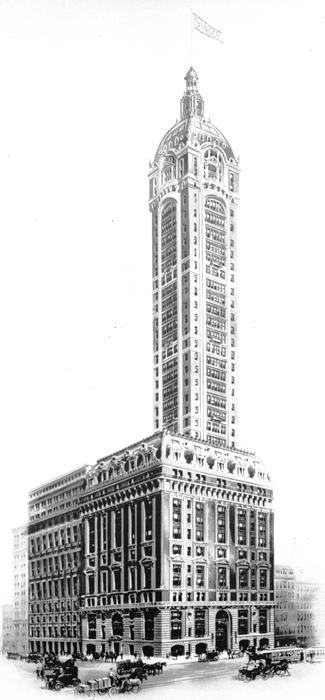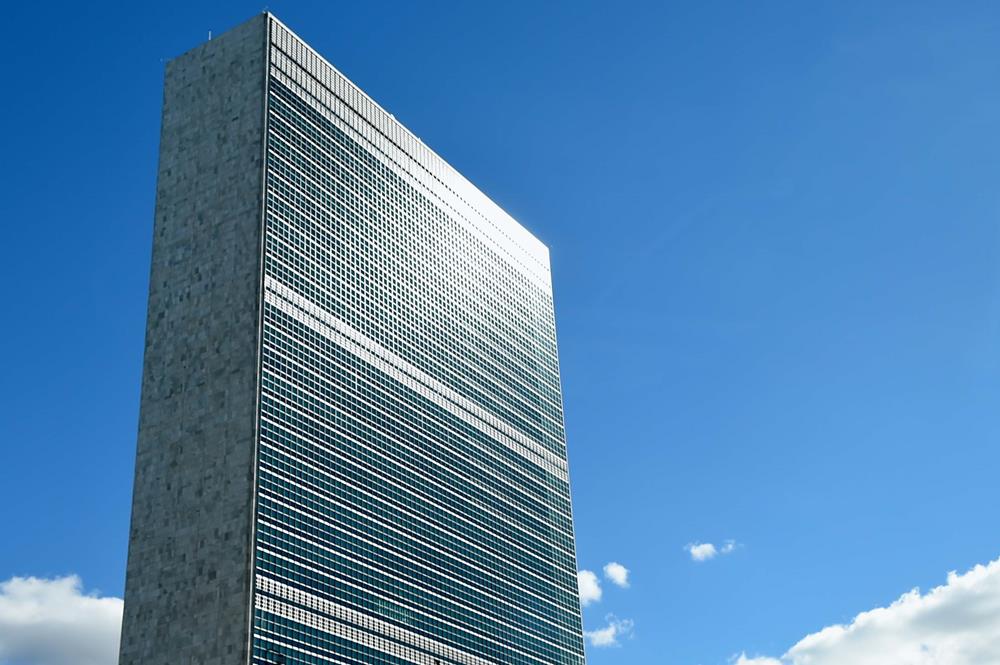Often called the “concrete jungle,” New York City is known for its iconic skyline. Certainly, it’s the city where many of the world’s best architects created their masterpieces. From the cobblestone streets of its oldest neighborhoods to the shimmering glass of its tallest skyscrapers, every building tells a story. Let’s journey through the architectural history of this iconic city.
The Colonial Foundations (17th-18th Century)
The architectural history of New York began in the 1600s when Dutch settlers laid the first stones of New Amsterdam.
Dutch Styles
In New Amsterdam, Dutch styles heavily influenced the architecture, characterized by steeply gabled roofs and brick façades. Many of these early buildings were designed to be both functional and attractive, with their red and yellow brick fronts looking quite striking. Buildings often rose to six stories, with the lower parts being substantial and neat. This was a time when the city began to develop its distinct personality, diverging from European traditions and laying the groundwork for a uniquely American architectural identity.
One of the notable architectural features of this period was the use of large windows, which were a legacy of Netherlandic design. These windows, often accompanied by strong, thick shutters, allowed ample light into the buildings, creating bright and airy living spaces, a stark contrast to the dark, low-ceilinged homes typically associated with early settler dwellings.
The interiors were also notable for their high ceilings, often reaching ten to twelve feet on the first floor. These tall ceilings were a holdover from the days before chimneys when smoke from fires was allowed to escape through the rafters. Even after introducing chimneys, these high ceilings remained a feature of Dutch architecture. The combination of large windows and tall ceilings was quite innovative for the time and contributed to a pleasant living environment.
Fort Amsterdam
The city’s development was not just about residential buildings. It also included fortifications like Fort Amsterdam, which played a key role in the settlement and defense of the area. By 1655, New Amsterdam’s population had grown to around 2,000, expanding to almost 9,000 by 1664. This growth necessitated the development of various structures, including churches, fortifications, and houses.
The remnants of New Amsterdam’s architectural heritage can still be experienced today through historical sites such as the Van Cortlandt House in the Bronx, the Old Stone House in Brooklyn, and the Conference House in Staten Island. These sites offer a glimpse into the early days of New York City, reflecting the Dutch colonial influence that shaped the beginnings of this now bustling metropolis.
The Birth of a Metropolis (19th Century)
During the 19th century, architectural styles transformed as New York underwent urban development.
Greek Revival Styles
One of the defining features of early 19th-century New York was the introduction of the Greek Revival style, exemplified by buildings such as the City Hall, completed in 1812. With stately columns and pediments, it echoed the classical architecture of ancient Greece and was a fitting symbol for a young nation looking back to the democratic ideals of the ancient world.
As the century progressed, New York underwent significant urban development. It was during this time that Central Park and the Brooklyn Bridge were constructed, transforming the city’s landscape. These projects were part of the broader urbanization process that shaped New York into a major economic, cultural, and architectural hub.
Architectural styles in New York evolved as technological and industrial advancements continued to progress. In the 19th century, builders started developing skyscrapers. The Dakota Building on the Upper West Side is one of the first skyscrapers. Completed in 1884, the Dakota was an eight-story building combining North German Renaissance architecture with French-influenced apartment layouts, making high-rise living desirable for the middle class.
The First Skyscrapers
In the late 19th and early 20th centuries, Downtown Manhattan witnessed the rise of iconic skyscrapers. The Flatiron Building, completed in 1902, was a prime example of this trend. Designed by Daniel Burnham, the Flatiron Building was a 22-story tall structure that skillfully utilized its triangular site and steel skeleton construction technique. Despite initial skepticism about its slender structure, the Flatiron Building became an iconic symbol of New York City that still stands to this day.
Apartment Buildings
During this time, residential architecture also shifted. More apartment buildings like the Stuyvesant Apartments were being constructed. While initially met with skepticism due to concerns about privacy and safety, these early apartments represented a significant change in living styles, particularly for families. The need to accommodate a growing population on limited land led to innovative designs and the increasing popularity of vertical living spaces.
The Skyscraper Era (Late 19th – Early 20th Century)
As the 20th century dawned, steel and ambition combined to push New York’s skyline ever upward. While the Flatiron Building was a harbinger of this vertical aspiration in 1902, the iconic Empire State Building crowned the city as the ‘Skyscraper Capital of the World.’ Completed in 1931, the Empire State Building featured an Art Deco design that symbolized not just New York but the aspirations of an entire nation.
Skyscrapers became popular during the late 19th to early 20th century because of different factors, one of which includes the aftermath of the Great Fire of 1835. This event led to the reconstruction of the financial district with a variety of new buildings and New York’s position as a major financial center with intense competition in the banking sector. The lack of height restrictions in New York and the city’s small parcel land structure played a significant role in fostering the growth of skyscrapers.
Also, technological developments during the mid-19th century were crucial in making skyscrapers feasible. The introduction of iron-framed buildings allowed for taller structures with thinner walls compared to traditional masonry buildings. The need for stronger foundations and the invention of caissons for skyscrapers, coupled with advancements in fireproofing techniques and the development of elevators, enabled architects and engineers to design and construct buildings that reached unprecedented heights.
Key developments in skyscraper construction in New York City included:
- The New York World Building was designed by George B. Post in the Renaissance Revival style. It was the city’s tallest building upon its completion in 1890.
- The Singer Building was designed by architect Ernest Flagg. It was initially opened in 1899, but its distinctive tower was completed in 1908, making it the tallest building in the world at that time.
- The Woolworth Building, completed in 1913 by architect Cass Gilbert, which became the world’s tallest building at the time, standing at 792 feet. It was a significant architectural achievement both in terms of its height and its sophisticated design.
- The Bank of Manhattan Trust Building, also known as 40 Wall Street, completed in 1930, was a notable Neo-Gothic skyscraper that stood at 927 feet and briefly held the title of the world’s tallest building.
- The Chrysler Building, a renowned Art Deco skyscraper completed in 1931, reached a height of 1,046 feet. Its construction involved an intense competition with 40 Wall Street for the title of the tallest building, with the Chrysler Building ultimately winning the race due to its secretly constructed spire.
- The Empire State Building, completed in 1931, became the most iconic symbol of New York’s skyscrapers. With a roof height of 1,250 feet and a total height of 1,454 feet, including its antenna, it stood as the world’s tallest building for nearly four decades.
The Modern Metropolis (Mid-20th Century)
Post-WWII, New York embraced modernism —a style characterized by simplicity, functionalism, and a departure from ornate classical designs. Architects like Ludwig Mies van der Rohe and Le Corbusier influenced a generation of designers.
Major Developments in the Mid-20th Century
A key example from this era is the United Nations Headquarters, completed in 1952. This building exemplified the new aesthetic with its sleek, functional design, symbolizing a forward-looking perspective in architecture. It represented a shift towards buildings that were designed not just for their appearance but also for their practicality and utility.
Another significant structure from this era is the Seagram Building, designed by Mies van der Rohe and Philip Johnson and completed between 1955 and 1958. Situated in Midtown Manhattan, the Seagram Building stands out for its use of glass and bronze, presenting a minimalist style that was groundbreaking for its time. Its rectilinear form and clear lines exemplified the mid-century modernist approach, prioritizing simplicity and the integration of new technologies and materials.
The Lever House, designed by Gordon Bunshaft and Natalie de Blois of Skidmore, Owings & Merrill, is another notable example. Completed in 1952, this building was a pioneering project in the International Style of modernist architecture, significantly contributing to the modernist movement in New York City. Lever House broke away from traditional architectural styles and embraced a new vision that was both efficient and aesthetically distinctive.
These buildings, among others, marked a departure from the traditional architectural styles that had dominated New York City. They were not just structures but also symbols of a new era, reflecting the city’s evolving identity.
Diversity in Design (Late 20th Century to Present)
The late 20th century to the present day has been a period of remarkable architectural diversity in New York City, marked by innovative designs and a departure from traditional styles.
Postmodernism
Postmodernism made a significant impact from the late 20th century to the present, with notable examples like the AT&T Building, now known as Sony Plaza. This building, with its unique ornamental top, is a departure from the modernist principles of simplicity and functionality, embracing more eclectic and historical references in its design.
Eco-friendly design has also emerged as a significant trend, as is the case with the Hearst Tower. This building’s distinct diagonal grid pattern not only creates a unique visual impact but also significantly reduces the amount of steel used in its construction. Its design emphasizes sustainability and environmental responsibility, reflecting a growing consciousness about the ecological impact of architecture.
One World Trade Center stands as a poignant symbol of resilience and rebirth, rising from the tragic events of 9/11. This skyscraper, with its reflective glass facade and soaring height, is not just an architectural achievement but also a symbol of hope and endurance for the city and the nation.
Building Boom
Other areas in New York, like Brooklyn and Queens, have been developing their own skylines, reflecting a trend towards high-rise, luxury residential towers and commercial spaces. For example, Downtown Brooklyn is experiencing a significant building boom, while Queens has seen developments like One Court Square, adding to the city’s evolving architectural landscape.
Conclusion
The architectural journey of New York City is not just about buildings and design – it’s about the innovations and the resilient spirit of the people who built it. The diverse architecture of the city tells a story of the relentless pursuit of progress and beauty. As you walk its streets, look up and around. You’re not just seeing buildings; you’re witnessing chapters of an ever-evolving story, the story of New York City.

